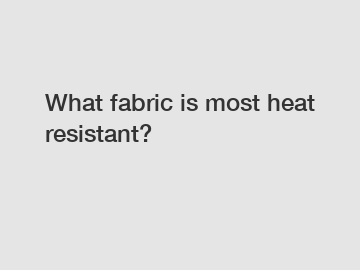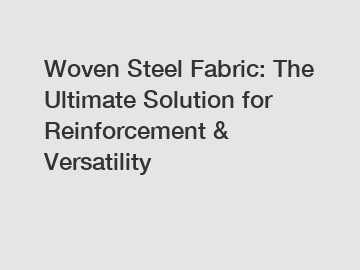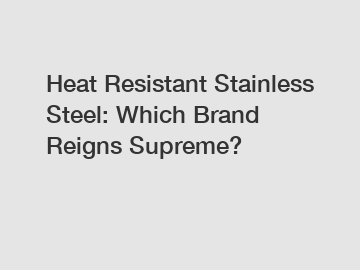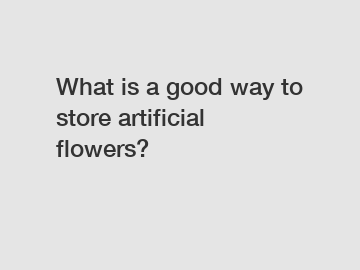What fabric is most heat resistant?
What fabric is most heat resistant?
When it comes to heat resistance, not all fabrics are created equal. Some materials can withstand high temperatures without catching fire or breaking down, while others may quickly combust or melt. So, what fabric is the most heat resistant? Let's delve into this burning question and explore the top contenders.
Fiberglass is renowned for its exceptional heat resistance. Made from fine fibers of glass, this fabric can endure extreme temperatures without losing its structural integrity. It can withstand temperatures up to a staggering 1000 degrees Celsius. Due to its outstanding thermal insulation properties, fiberglass finds extensive use in industries such as automotive, aerospace, and construction. This resilient fabric is often found in applications like fire blankets, protective clothing, and insulation materials.

Another fabric that boasts impressive heat resistance is Kevlar. Widely known for its use in bulletproof vests and body armor, Kevlar is a synthetic material developed by DuPont. It exhibits remarkable durability and can withstand temperatures up to 450 degrees Celsius. Kevlar's exceptional thermal stability makes it a popular choice in industries that deal with high heat, such as firefighters' turnout gear, racing suits, and industrial gloves.
Next on the list is Nomex, a flame-resistant fabric commonly used in protective clothing for firefighters, military personnel, and industrial workers. Manufactured by DuPont, Nomex can handle temperatures up to approximately 370 degrees Celsius. Moreover, this fabric has excellent resistance to chemicals, making it an ideal choice for environments where exposure to hazardous substances is likely.
Moving on, we have PBI (polybenzimidazole), a heat-resistant fabric that is hailed for its ability to withstand extreme heat and flames. With a melting point exceeding 400 degrees Celsius, PBI is a popular choice in protective gears such as firefighter apparel, racing suits, and military applications. Furthermore, its chemical resistance and low smoke emission properties contribute to its wide applicability in demanding environments.
Explore more:What is the best material for RF shielding?
What is the best material for RF shielding?
What is conductive fabric used for?
Is it cheaper to do fake flowers?
What is a cheap conductor of electricity?
Which Artificial Greenery Bulk Option Is Eco-Friendliest?
Understanding CVC Material: Your Ultimate Guide
Now that we have discussed some of the top heat-resistant fabrics, it's crucial to understand how these materials achieve such remarkable resilience.
Firstly, these fabrics are often treated with specialized coatings or finishes that enhance their heat resistance. These treatments ensure that the fabric remains stable even under extreme temperatures, preventing the breakdown of its inherent protective qualities.
Secondly, the fiber structure of these fabrics is crucial in determining their heat resistance. Fabrics composed of long, tightly woven fibers, or those with high-density weaves, tend to offer better protection against heat compared to loosely woven materials. This superior structural design helps to minimize the transfer of heat energy, ensuring that temperature levels on the other side of the fabric remain significantly lower.
Moreover, the chemistry of the fabric plays a significant role in its ability to withstand heat. Materials with inherently fire-resistant properties, such as Kevlar and Nomex, owe their heat resistance to the unique chemical composition of their fibers. These chemical properties work at a molecular level to resist heat transfer and prevent the fabric from catching fire.
In conclusion, the market offers a plethora of heat-resistant fabrics, each with its own set of advantages and applications. Fiberglass, Kevlar, Nomex, and PBI are among the top contenders in terms of heat resistance. When selecting a fabric for high heat environments, it is crucial to consider factors such as temperature requirements, duration of exposure, and the need for additional properties like chemical resistance. By carefully evaluating these factors and choosing the appropriate fabric, individuals and industries can ensure the safety and protection of their personnel in demanding thermal conditions. So, whether you're facing intense heat in the workplace or navigating hazardous environments, knowing the right heat-resistant fabric can make a significant difference in safeguarding lives and property.
Want more information on conductive mesh fabric, silver ion antimicrobial technology fabric, china heat conductive fabric manufacturer? Feel free to contact us.
Explore more:Revolutionizing Renewable Energy: Bulk Production of Artificial Leaves – Answering Your Google Queries!
Discover the Magic of Lightweight Polyester Fabrics!
Unveiling the Exceptional Durability of Light Polyester
Unveiling the Secrets: Most Realistic Artificial Flowers!
Shielding Yourself: Benefits of Silver Fabric EMF Protection
Which silver fabric is best for blocking EMF radiation?
Are artificial delphiniums the future of floral décor?










